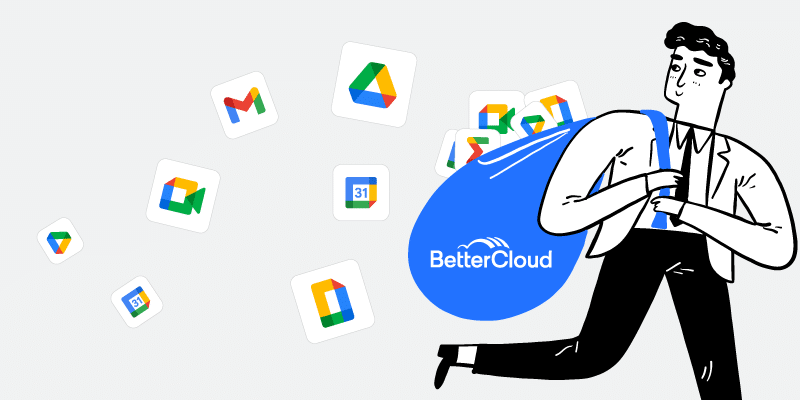Technology Adoption Done Right: These Are the Lessons Implementation Experts Live By
March 22, 2017
6 minute read

Most people hate change. For those that loathe the status quo, it’s hard to understand why some people refuse to latch onto the newest technologies. After all, doesn’t new technology lead to more productivity and a competitive advantage?
Still, don’t forget that change is uncomfortable.
Just imagine spending the last 20 years working in Outlook, Word, and Excel. Then, one day, you’re told you can no longer use any Microsoft tools. Now, your organization is moving to G Suite, and you’re expected to switch to Gmail, Docs, and Sheets.
Suddenly, sending a calendar invite is now a 30-minute find-and-seek mission.
Now, this isn’t an article about rolling out G Suite or any other specific technology. This is about the strategies and tactics that successful technology implementers use to make change stick.
Below you’ll find actionable advice from experts who successfully implement new technology for a living. I’ve also asked three technology implementation experts from our BetterIT community to share their perspectives on how to achieve success when adopting new applications.
How to Overcome Legitimate Resistance to Change
Some advice stands the test of time. In this Harvard Business Review article from 1985(!) and another from 2015, the authors share techniques to overcome pushback.
- Anticipate opposition and mind the “Innovation Assassins.” While it may be easy for you to see the benefits of technology changes, many others likely won’t. “An innovation needs a champion to nurture it, and any new technology capable of inspiring strong advocacy will also provoke opposition.” according to HBR. Get ahead of naysayers concerns by addressing their fears related to losing certain skills or perceived power. When working with managers and higher ups, be aware that you’re putting them on the same playing field with their subordinates. One way to deal with this is to “teach supervisors how to instruct” others on using new technology.
- Always point to the personal benefit of new technology. If people can’t see how change is positive for them, they’ll be more likely to push back.
- Choose technology wisely. While functionality is critical, user-friendliness may be more important in some cases. Vendors will always seek to reach feature parity with their competitors. “If your goal is a high adoption rate within the organization, make sure you’re choosing the most approachable, most intuitive system possible,” says Michael C. Mankins, a partner at Bain & Company.
- Make it routine. What’s the best way to learn a new technology? Most people would say complete immersion works best. According to Mankins, the key to driving usage is to “implicitly raise the cost of not using the new technology.” Just make it part of their everyday routine. Keep in mind that this could drive people to create obscure workarounds. However, if you highlight “quick wins” you can offset this by sharing organizational and personal gains.
As you’ll read later in the article, executive alignment and sponsorship are both vital to dealing with critics.
What It Takes to Embed New Technology Into an Employee’s Workflow
Slack has created some great content showing how they help drive change. These principles apply to any technology implementation, not just Slack.
- Focus on the purpose. Define the personal benefits of change, but also make sure people understand the business benefits. Slack’s Rav Dhaliwal (leads customer success for EMEA) recommends incorporating a business metric to help articulate the value. Here’s an example: “Our goal for Slack is to connect our Sales, R&D, and Production teams to ship our new products 20% faster.”
- Leverage key people. Active and visible executive sponsors should help the company understand the benefits of the change and the cost of not changing. Middle managers must lead by example and make themselves available to answer questions. Training your middle managers to teach their subordinates will reduce the number of questions sent your way.
- Start with use cases that maximize adoption. Try not to push users through too much change too early. Find “lightweight” ways to get people to incorporate the technology into their day-to-day use. “If you start with use cases that are too sophisticated, that have too much of a change impact; it really has a negative effect on adoption,” says Dhaliwal.
- Make sure it’s simple to get help. From Slack’s research, “If you go to get help and that experience is poor, you’re less likely to follow through with the rest of the change.”
- Translate knowledge into action by sharing use cases. Sure, it’s helpful to know what a product can do, but more important is understanding what you can do with a product in the context of your role. Don’t just teach people about the features and functions. Teach them how they can apply those features and functions to improve their workflow.
- Keep up the momentum. If adoption is high, there’s a tendency by stakeholders to view the rollout as a success. However, if you don’t sustain, maintain, and reinforce the change after the initial push, you run the risk of having people revert to their old ways. Create communication checkpoints throughout the rollout, highlight positive behavior on an ongoing basis, and seek to embed the technology deeper into your employees’ workflows.
Why You Should Pilot, Communicate, Entice, and Train
Last year, BetterCloud rolled out Slack to more than 100 people in two offices. There are many gems in our article about how we took advantage of shadow IT and rolled out Slack.
- Start with a small, diverse pilot group. When rolling out a new technology, it’s a smart idea to start with a pilot group to help you anticipate kinks prior to a larger rollout. If you can, choose a group of people that you work near. Throughout the implementation, take note of where the snags are. You can even use a Slack channel, email group, or ticket tags to give people a platform for communicating with you. This also helps record all issues giving you a frame of reference to turn to before your wider implementation.
- Communicate what, when, and why. While there is a balance between too little and too much information, many new application rollouts tend to lack communication. Remember, change is a chore for many. If you don’t tell people exactly what’s happening, when it’s happening, and most importantly, why it’s happening, you may find that your communication will fall flat. Keep in mind that communication can be automated and scaled. Doing the upfront work to create a 10-week long ramp up or getting started program will make your job easier down the line. You don’t even have to write much as most applications have resources that are already available online. For example, G Suite has an entire Change Management Resource Center, and Slack has an Onboarding Checklist for New Users as well as many excellent guides for team owners, admins, and users.
- Entice new users by making sure the “cupboard isn’t bare.” First impressions are important. If you sign into a new application for the first time and absolutely nothing is in there, you may be inclined to turn around and never come back. As our Director of IT states, “The value of an application should be apparent right away.” For example, if you’re rolling out a new enterprise storage and collaboration platform, go ahead and share a document with all new users that explain the benefits or answers FAQs. If you’re moving your organization to a new email platform, why not send everyone a few emails with helpful hints.
- Offer intimate training immediately after the rollout. In the days following a new technology implementation, block off hours on your calendar, and even the calendar of power users and managers, to sit with people to answer questions either one-on-one or in groups. You can encourage attendance or participation through small incentives like free lunch or treats (Fact: People love food). These trainings should have a butterfly effect that creates many more internal “friends of IT.”
3 Pieces of Advice from Implementation Experts
I spoke with three technology implementation experts and asked each them to provide a piece of advice for IT leaders who are dealing with change.
From Kevin Liu, Partner Manager at Avalon Solutions.
“Test, test, test. Most organizations always test the technical setup, but they forget to test the human factors. Test the messaging, the training, the communication, the support systems… test it all!”
From Darryl Mitchell, lead solutions engineer at NeoCloud.
“For existing technologies that are being moved to the cloud, i.e. Office 365 or Google Apps, the biggest mistake I’ve seen through hundreds of migrations is a tendency to only focus on replacing existing on-premise technologies instead of embracing all the additional functionality that the cloud offers. For new technologies, the biggest mistake is failing to get valuable input and ideas from non-technical users on how the new technology can be leveraged. Some of the best ideas come from “power users” that aren’t in technical roles.”
From Jason Etter, president at Profound Cloud.
“Before you make any decision, leadership and key staff must collectively design and then agree on success criteria for this new technology. 60 days following the deployment, consolidate the criteria into ten critical questions and share with all staff utilizing this new tech. Evaluate the results and make any potential tweaks and or updates to the tech. Upon the 90 day mark, release a simple one question form to all staff utilizing this tech: Does <X technology> satisfy <Y primary function>?
BetterCloud helps IT simplify the management of modern technology to make onboarding (and offboarding) for apps like G Suite, Slack, Dropbox, and Zendesk much less cumbersome. Learn how.






